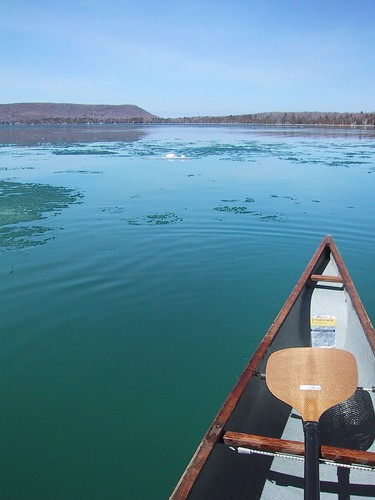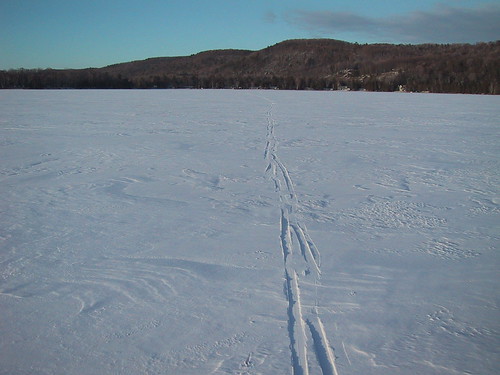Blue Origin Spaceport Plans are Talk of Texas TownFlight SchoolPosted in it's entirety as it may disappear:
---
Blue Origin Spaceport Plans are Talk of Texas Town
By Michael Graczyk
Associated Press Writer
posted: 15 March 2005
6:30 p.m. ET
VAN HORN, Texas (AP) -- Even skeptical locals, who've become wary over the years of city slickers with big ideas for their town, perked up when Amazon.com founder Jeff Bezos made his pitch -- a spaceport for commercial travel into the beyond.
Bezos flew into this West Texas town a few weeks ago to tell key leaders how he planned to use his newly acquired 165,000 acres of desolate ranch land. He also gave his only interview so far on the spaceport to the Van Horn Advocate, the weekly newspaper Larry Simpson runs from the back of his Radio Shack store.
“He walked in and said: 'Hi, I'm Jeff Bezos,' and sat down right in that chair there,'' Simpson said, pointing to spot in his small cluttered office.
Over the next 30 to 40 minutes, Simpson said Bezos told him the goal of his venture - known as Blue Origin - was to send a spaceship into orbit that launches and lands vertically, like a rocket.
“He told me their first spacecraft is going to carry three people up to the edge of space and back,'' Simpson said. “But ultimately, his thing is space colonization.”
Bezos, 41, was accompanied by Rob Meyerson, Blue Origin's program manager, whose history includes stints as a manager on the space shuttle emergency return vehicle project and lead aerodynamics engineer developing the shuttle's parachute landing system.
Bezos said Blue Origin would first build basic structures at the Texas site, such as an engine test stand, fuel and water tanks and an office building, then begin flight tests in six to seven years, Simpson said.
He said most of its initial research and development would be done in Seattle, where Bezos and his companies are based.
Bezos has said nothing else publicly about his project, and did not grant an interview request made by The Associated Press.
A Houston-based spokesman for Blue Origin, which was incorporated in September 2000 in Washington state, said there was “not much to see or tell” and that the project “won't go anywhere any time soon.'”
The spokesman, Bruce Hicks, provided a short news release and a company fact sheet, which included Blue Origin's mission statement - to “facilitate an enduring human presence in space.”
Bezos isn't the only tech industry billionaire with stars in his eyes and ties to Texas, where Bezos attended elementary school for three years in Houston while his stepfather was an engineer at Exxon.
SpaceX, started by PayPal founder Elon Musk, plans to launch and deploy a military satellite this year using a rocket. The California-based company has conducted much of its testing in McGregor, Texas, near the Fort Hood military base.
John Carmack, who made a fortune on “Doom” and “Quake” through his video game company ID Software, owns Armadillo Aerospace based in suburban Dallas. The venture also hopes to launch its own brand of space rockets.
Microsoft co-founder Paul Allen spent $20 million to fund the SpaceShipOne rocket plane that last fall successfully reached the edge of space and returned. It was dropped from beneath a flying craft and landed like a plane. (The NASA space shuttle, which takes off vertically, also lands like a plane.)
Winning the space race takes talented people, and Blue Origin's Web site lists several job ads for engineers -
”highly qualified and dedicated individuals ... among the most technically gifted in his or her field.”
That's a tall order for the 3,000 or so residents of Van Horn, many of whom believe the biggest thing to happen in recent years was construction of a new truck stop on Interstate 10.
About 120 miles east of El Paso, Van Horn primarily is a rest stop for travelers along I-10, the nation's southernmost cross-country highway. About 50 miles to the north is Guadalupe Mountains National Park, which contains many of the highest mountains in Texas, including the signature 8,085-foot El Capitan. It can be seen from a distance on Bezos' property amid desert and cattle-grazing terrain and salt lake beds.
Broadway, Van Horn's main street which parallels the freeway, is dotted with long-abandoned businesses, many of them flat-roofed adobe-style buildings, and two vehicles waiting at the street's lone stop light constitute a traffic jam.
Bill Talley, whose Van Horn Pharmacy is the only place to get a prescription filled within a 90-mile radius, said he was surprised by Bezos' project but was withholding judgment until he knew more. His wife, Mary, was more blunt.
“We're used to it,” she said of “exploiters” who have raised residents' hopes and then fled.
More than a decade ago, some businessmen touted a mica mining venture that created a buzz but went nowhere. Fields along I-10 heading east toward Midland and Odessa are littered with rusting oil field equipment, monuments to the oil industry crash of the 1980s.
“We've had gentlemen come in here to change the world,'' said John Conoly, 76, the Culberson County judge for the past 30 years. “And nothing ever came of it.'”
But Bezos is different, Conoly said.
“After meeting and visiting with him, I have every confidence in the world he will do what he says he will do,'' the judge said. “I know he's going to have some of the best minds for this project. He doesn't do things halfway or second class.''
Bezos also told the Van Horn group that he wanted to give his family the opportunity to enjoy life on a ranch just as he did as a child. The Internet retailer chief executive spent summers at his grandfather's spread in Cotulla in South Texas.
While Bezos' spaceship plans were a surprise, his presence in Van Horn wasn't. His private jet had been seen a number of times in the past year at the local airstrip as he scouted the area and purchased three ranches.
On Bezos' new property, the only noticeable change, residents say, are the new “No Trespassing'' signs posted every mile or so on the rusty barbed wire cattle fences bordering Texas Highway 54.
Conoly said people aren't real excited yet, but that could change once construction begins.
For Spanish-speaking residents like Manuel Baeaza, 47, who works at a marble mine in the mountains that adjoin Bezos' property, the project known as “El Estacion” or “the station,'' brings promise.
“More jobs, it would be a blessing,'' said Baeaza, who's lived in the area for 14 years.
Ricky Hutson, who works at used bookstore and resale shop where he also lives, was a bit more philosophical.
“With (Bezos) coming out here, this is going to force this town to change for the better,'' he said. “If you've lived a hard life, this is a place you can live in peace. But if you're used to the high-tech lifestyle, you might not want to come here.
“Maybe we'll actually get some business. As you can tell, this town is pretty behind the times.”




